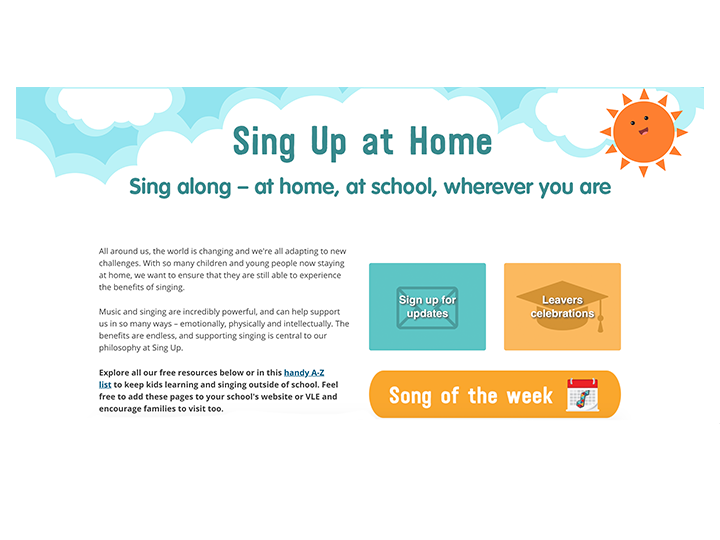
1 What harms children’s voices?
Q: Are there any physical signs to look out for to show that a child might be straining when they are singing?
A: The key is to consider what might be ‘high-impact’ voicing. If children shout for the duration of a football match their vocal folds may become swollen and their speaking voice husky. By the next day their voice will be mostly recovered. However, if this is repeated too frequently, the voice won’t fully recover between times and longer-term damage could be sustained.
The same is true of high-impact singing: loud and/or high. If the singer takes a heavy voice quality too high in pitch for too long (when singing becomes a bit shouty), they may injure the soft tissue of the vocal folds. This will be heard as a slight huskiness or breathiness in the speaking voice. The rule is to save extreme vocalising for select occasions!
Spot the signs
Physical signs that indicate problems often originate from the body being out of balance:
- lifting the chin
- pushing the head forward
- hollowing the back
- slumping
- over-opening the jaw
- tensing/lifting the shoulders
- gripping the jaw.
These can all lead to muscle tension or strain within the larynx, which can limit the pitch range and eventually weaken the voice.
It is easy to see if singers are getting into any of the above physical imbalances; regular reminders about lengthening the back and loosening the shoulders and jaw are good, even for the most accomplished singers. The good news is that children’s voices are amazingly robust: if they do get injured they can be quick to heal. However, it takes longer to un-learn the habits which may have caused the problem in the first place.
2 Out of tune?
Q: What approached or exercises would you recommend when working with children who find it difficult to sing in tune and spend most of the time singing underneath everyone else?
A: Usually, this is down to the brain not (yet) sufficiently keying in to what’s going on around. Singing in tune involves making a neural link between hearing pitch height and muscular activity in the vocal folds to match the pitch. In some children, this link simply takes longer to develop than in others. The best advice is support and encouragement. The worst (long-term) advice is to tell them to sing quieter!
- If you can only work as a group, support the weaker voices by surrounding them with stronger children.
- Choose repertoire that has a pitch range that isn’t too high and without big leaps in it.
- Sol-fa exercises (preferably with hand signs) are an excellent way of training a choir to have better intonation.
Ideally, you’d work individually with your out-of-tune singers. If they’re unaccustomed to using higher pitches, explore the whole pitch range with swoops and siren noises, using hand movement to correlate with rising and falling. Try the Siren warm-up. This visualisation of pitch ‘altitude’ is a very helpful tool, and helps them locate the muscular activity necessary to change pitch.
Ask them to sing a note and you repeat at the same pitch (with children’s voices, this is easier for women teachers than men). Again, use your hand to indicate their ups and downs in pitch. This gives feedback of the sensation of ‘tuning-in’.
Finally, demonstrate simple musical phrases in a pitch range comfortable to them (using hand signs), and get them to copy.
3 Trying to get your voice heard?
Q: How can I protect my voice in a noisy classroom? I hate having a sore throat at the end of the day!
A: You are not alone! More than 60% of UK teachers have at some time had a voice problem, and 20% have missed work as a result. The following evidence-based tips will help you avoid problems:
- Keep hydrated. Have a bottle of water on the go all day and take small, frequent sips. This helps not just to keep you within optimum hydration level (two to three litres of liquid intake a day), but swallowing helps lubricate the larynx and keep it clear of phlegm. Tea and coffee are dehydrators, so drink these alongside, not instead of, water.
- Posture. Keeping a good upright posture (imagine being pulled upwards from the crown of your head) enables easier breathing and puts less strain on your larynx. Avoid twisting while talking.
- Rest. Resting your voice is important, but frequent short breaks are better than infrequent long ones. Build some silent or pupil-led activities into every lesson. When taking a singing rehearsal, don’t be tempted to sing everything – get a child to demonstrate, or use a keyboard or audio track.
- Amplification. Using a microphone/amplifier is a great help, particularly
in poor acoustics. If you have to raise your voice, the simple tactic of
cupping your hands to create a megaphone effect helps. - Keep quiet when lifting or carrying. Physical exertion constricts the throat, so don’t use your voice until after you’ve done the lifting or reaching for something.
To help recover a tired voice the golden rules are: inhale steam, rest your voice in the evening and get lots of sleep!
Stuart Barr is President of the British Voice Association, a Vocal Coach at the Royal Academy of Music and a judge for BBC Choir of the Year. He is also a governor of an inner London primary school.
Jenevora Williams PhD is a singing teacher, Singing Consultant and teacher-in-residence for the National Youth Choir and has taught at The Royal College of Music and Surrey University. Recently, she was awarded a PhD from the Institute of Education for her research into the vocal health and development of choristers.



